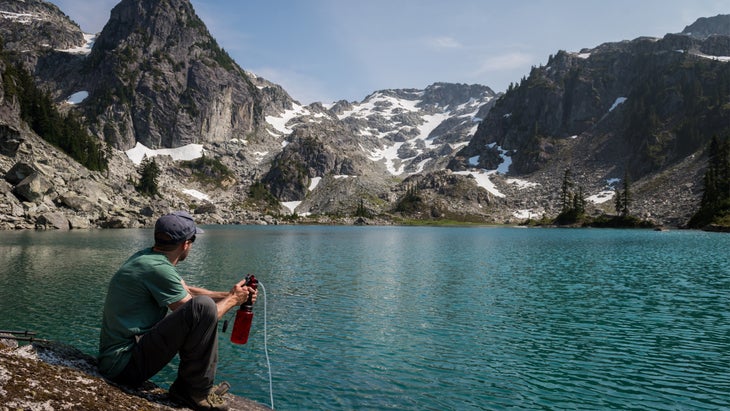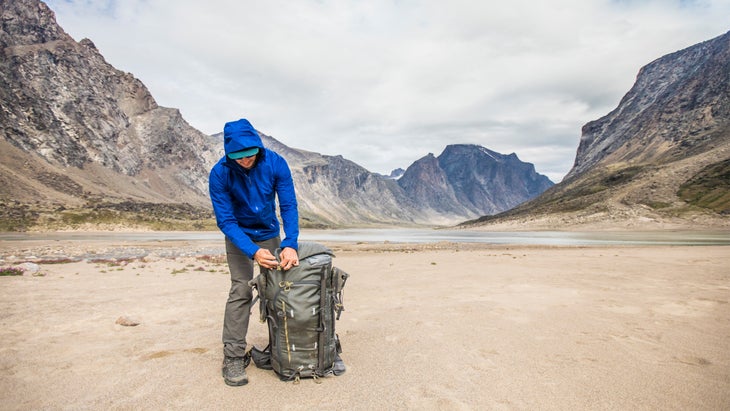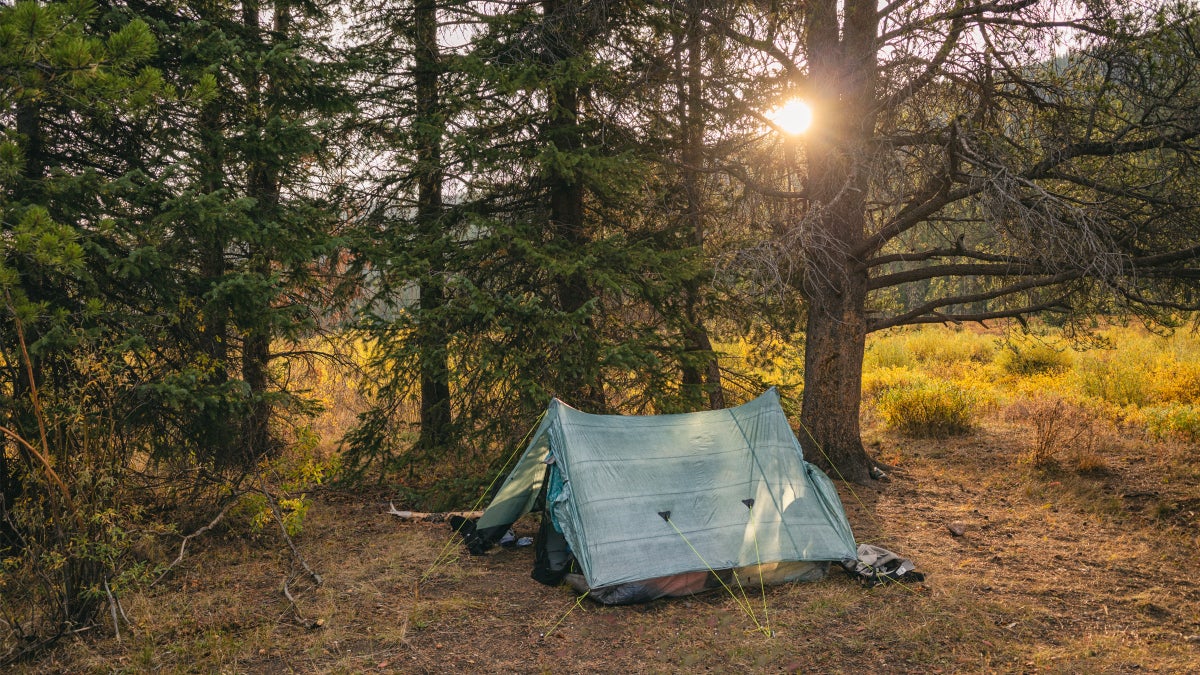Products You May Like
Ultralighters are the oddballs of the hiking world. Whether it’s wearing a combination poncho-tarp or cold-soaking their meals to avoid carrying a camp stove, some of the ideas that ultralighters consider rational may strike other backpackers as ridiculous. And while ultralight hikers can be overzealous and prone to experimentation, their most common habits are rooted in common sense. Due to the limits of their gear, ultralighters often find creative ways to get warm, stay comfortable, and enjoy their hikes while carrying less. And that’s something any hiker can appreciate: Whether you’re looking to lighten your load or you’re perfectly content with the weight of your backpack, adopting these five habits can make your next backpacking trip a little easier.
Choose your campsite wisely
Every backpacker is on the lookout for a perfect campsite. To some, that might mean a great viewpoint to watch the sunset. For ultralighters armed with diminutive tarps and tents, the ideal site might not be scenic at all. Wind and condensation can overwhelm ultralight shelters, so finding a campsite that can provide extra weather protection is a top priority. If there’s rain in the forecast, find a stand of trees that will capture most of the precipitation to avoid rain splash. In windy conditions, look for a natural windbreak and arrange your shelter to shield it from the prevailing wind. Avoid gullies, draws, and other low points, where cold air can pool at night and cause condensation issues.

View each water source like a precious gift
There’s no question that water is a vital resource on a hiking trip. It’s also one of the heaviest things you can carry, so ultralighters are constantly calculating their water needs down to the drop. Many ultralighters try to make the most of every water source by drinking at least a liter every time they stop to filter. In places with ample water sources (many sections of the Appalachian Trail, for example, have a reliable source every three to five miles), a hiker using this method can bounce from source to source throughout the day without ever carrying more than a liter in their pack.
Soak your dinner before you start cooking
Ultralight stoves aren’t always the most efficient. Whether fueled by alcohol, wood, or Esbit tabs, the lightest stoves aren’t designed for extended cooking times. It doesn’t take many nights of eating crunchy, half-cooked noodles before you start looking for a solution to your culinary woes. An ultralight fix? Add a splash of water to dinner well before you actually sit down to start cooking. For some, this might be as simple as adding water to their instant rice while they set up camp. A more committed approach would be to pack dinner in a zip-top bag, and soak it all day while hiking. Those extra hours can ensure a well-cooked meal without relying on your stove to bring a full pot of water to a rolling boil, saving time and fuel. Some enterprising ultralighters take this a step further, and opt for a cold-soak method that allows them to leave the stove at home. Giving up the luxury of hot meals is a decision that shouldn’t be made lightly, though.

Modify your gear
Most backpackers trust gear companies to deliver a product that suits their needs without much extra thought. But to ultralighters, a piece of gear fresh from its packaging is like a blank canvas, ready to be modified into a masterpiece with the help of a pair of scissors or razor blade. Ultralighters take most of these measures with the goal of saving weight. Some, like sawing your toothbrush in half, are a matter of grams rather than ounces, but others offer serious weight savings. Cutting a full-length foam sleeping pad to torso length can nearly halve its weight and save space in your pack. Some backpacks come with an abundance of adjustable webbing, buckles, and extraneous features; making them lighter can be as simple as cutting webbing for the hip belt and shoulder straps shorter, detaching the hydration pack sleeve and sleeping bag compartment divider, and (if you don’t need the extra space) removing the top lid entirely.
Pore over spreadsheets
For many ultralighters, optimizing their gear is part of the fun. A good portion of that process happens by testing gear on trips, but ultralight gearheads also spend their free time weighing gear on kitchen scales and seeing how their kit stacks up to others in the community. Thanks to websites like Lighterpack, organizing a packing list and sharing it with friends is easier than ever. While it might seem obsessive to a casual observer, quantifying the weight of your gear can be a huge help if you’re serious about going ultralight.
